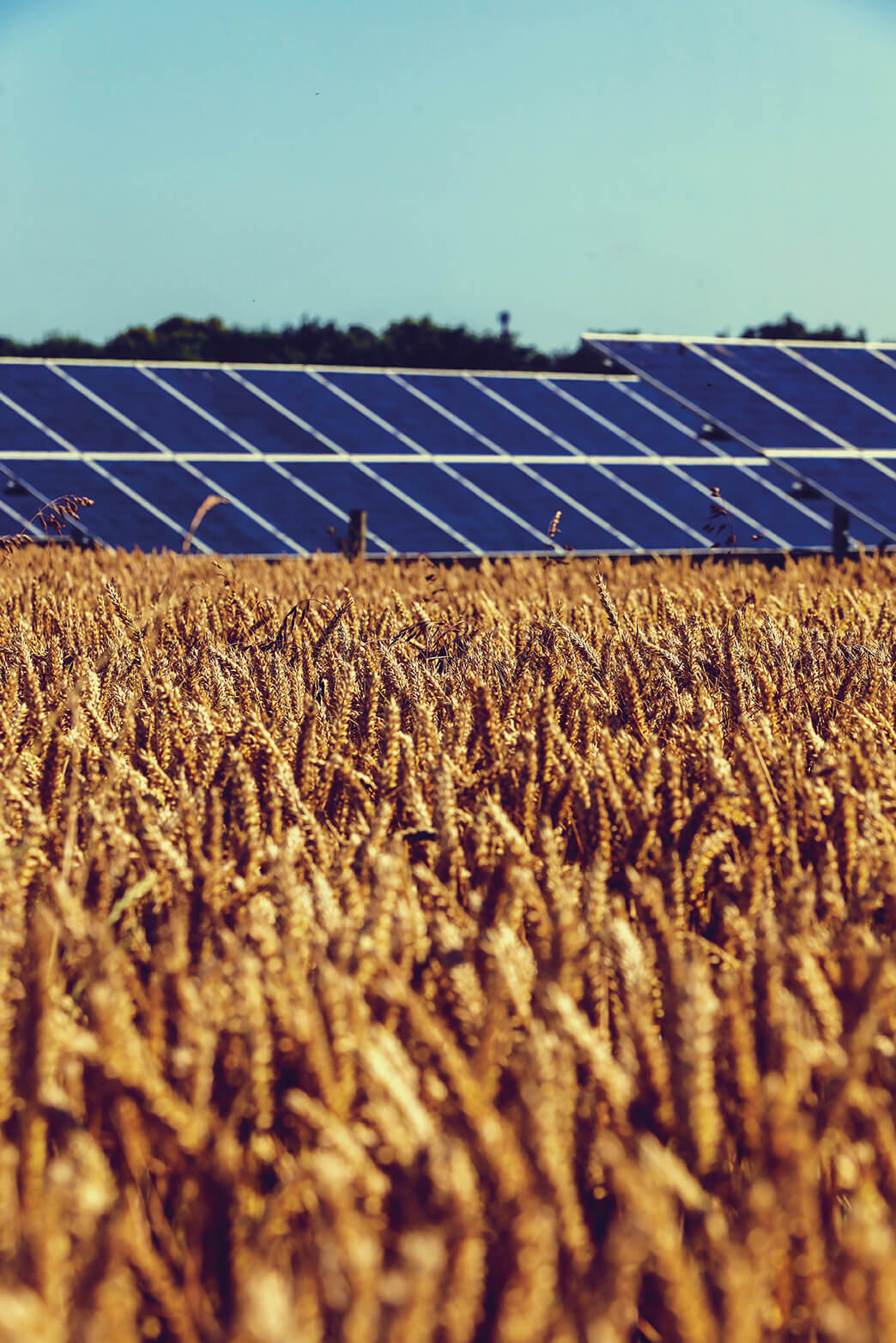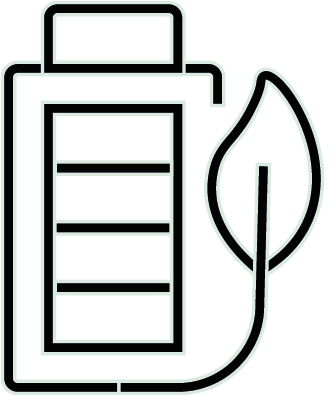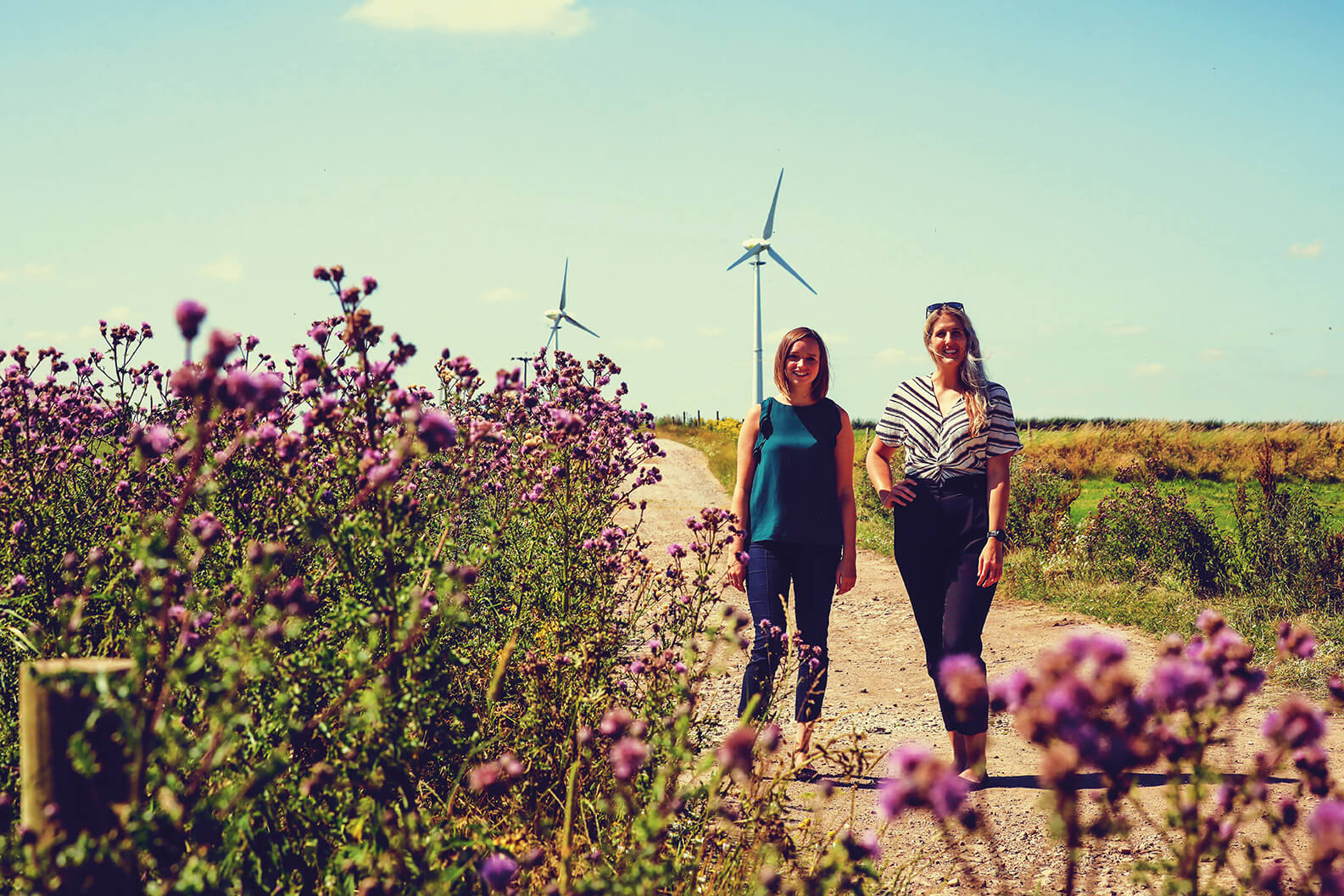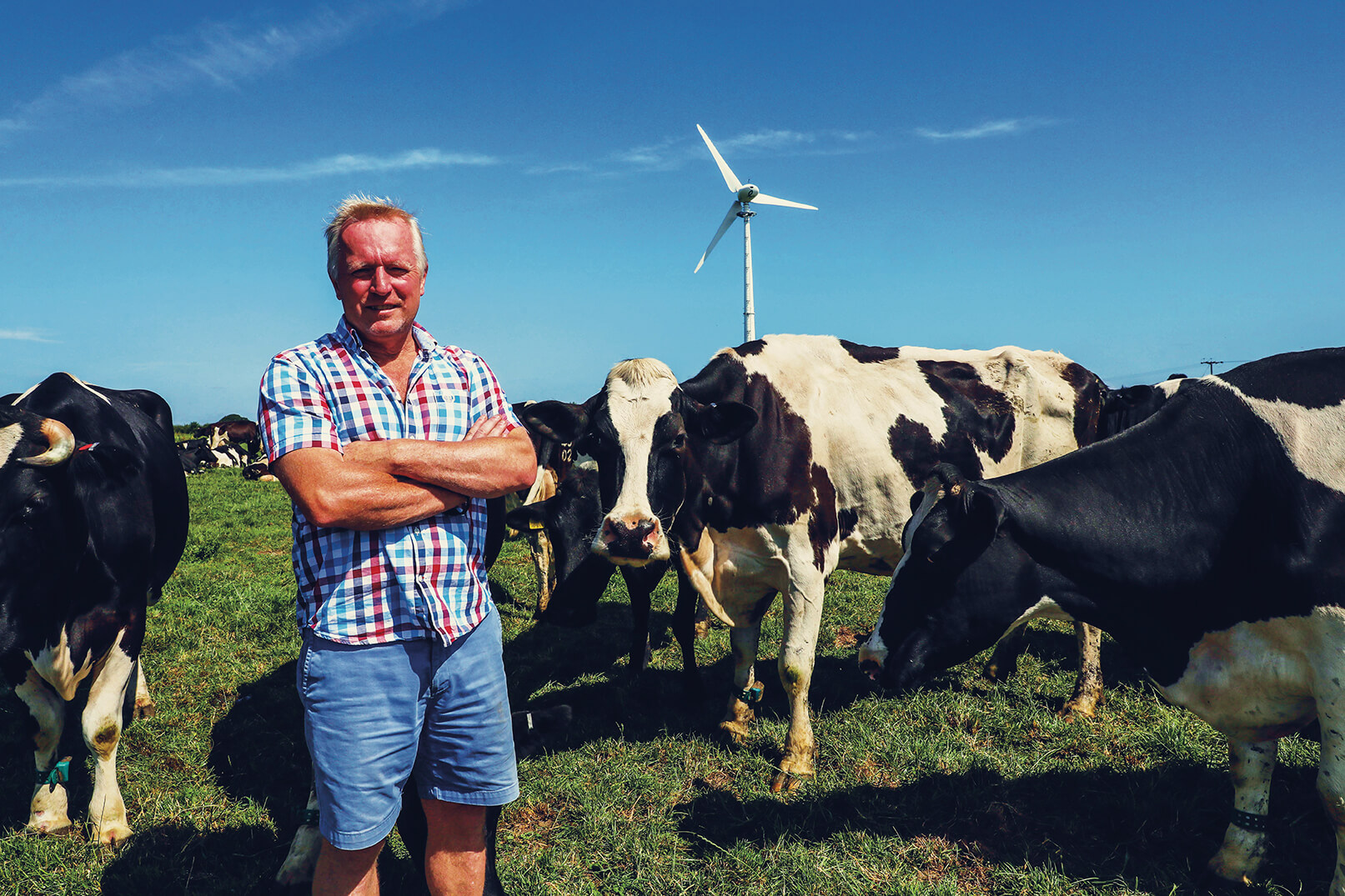
Politics and policy created boom and bust in the renewable energy sector a decade ago. But, despite the rollercoaster ride, the long-term prospects for landowners look bright.


It is often the early adopters of new technology who seize the opportunity and see the greatest benefit. For farms and estates, renewable energy is a case in point. In April 2010, the Government announced the opening of the Feed-in Tariff (FiT) – a generous subsidy for those who could generate and export electricity to the grid. The scheme was aligned to political commitments to renewable technologies, and played into the hands of those with suitable land or natural assets at their disposal. Planning applications for solar PV and wind turbines flooded in, along with, to a lesser extent, combined heat and power units, anaerobic digestion plants and hydro-electric schemes.
Fast forward nine years and the picture is very different. The FiT closed in April and revised planning policy has all but killed on-shore wind turbines for the foreseeable future. The end of renewable energy opportunities for landowners? Far from it, in fact. Net zero carbon emission commitments, major advances in the electric vehicle sector and the need to future-proof rural and commercial businesses all suggest that renewable energy will continue to have a major role to play.
Helen Melling, energy specialist at Carter Jonas, says 2018 was the greenest year on record for the UK, with renewable energy generating 33% of total power production. “With the FiT closed, the government’s decarbonisation strategy and a ‘Road to Zero’ approach to electric vehicle rollout, it’s logical that renewable energy will play an increasingly important role,” Helen said. “Our rural and commercial clients are looking at the possibilities. Diversifying businesses and future-proofing is going to be key. Most landowners know this, but spotting the right opportunity is the hard part.”
projects with potential
Ground and roof-mounted projects are extremely effective on sites where high electricity use can be offset. On a larger scale, subsidy-free developers may offer landowners rental agreements spanning 30-plus years.
SOLAR



Electric vehicle
charge points
Businesses can own and operate charge points, charging their own rate to either cover costs or make a profit. If installed with a developer, landowners receive a rent and/or revenue share.

Electric vehicle forecourts

The petrol stations of the future – rapid charging stations to service multiple electric vehicles. Suitable for sites on busy road networks, on either an owner-operator basis, or rented to a developer.


Battery storage
As technology costs reduce, batteries fitted to store electricity generated on-site, offsetting peak use periods, will become commonplace. Developers continue to seek larger blocks of land for mass storage, to alleviate pressure on the National Grid at times of system stress.




What are the opportunities?
Clare Davey, associate in the energy team at Carter Jonas, sees the opportunities for landowners falling into two camps. The first is for those who can offset their own electricity costs with farm scale, ‘behind the meter’ projects such as solar arrays, electric vehicle charging points and battery storage. At the other end of the scale, land could be suitable for large, subsidy-free solar projects, forecourts dedicated to charging electric vehicles and battery storage in front of the meter. The former is more attractive and achievable for the majority of landowners, as they can often afford to own and operate such projects.
“Selling renewable electricity to the grid doesn’t really stack up anymore, unless it’s at a scale requiring upwards of 30 hectares of land, which would be equivalent to a 20MW solar PV scheme,” Clare said. “But if you can install behind the meter projects, it certainly does. You should be looking to offset as much of your electricity use as possible by generating it yourself; ideally you’re using at least 80% of the total output of the generating station. Similarly, for landowners without a significant electricity demand, there are opportunities to rent land out to a developer who is interested in a large site. In most cases that’s solar PV, because wind turbines are not often approved under current planning policy.”
Suitability is the watchword. The Carter Jonas energy team works on behalf of clients to establish which renewable technologies are feasible and how best to deploy them. The viability of a project will also depend on grid availability. “We might be able to look at a site for feasibility of battery storage but see potential for a different renewable scheme. It’s about looking at a variety of opportunities,” Helen added.

HARVESTING
THE

“You should be looking to offset as much of your electricity use as possible by generating it yourself”
Process
The first stage is to assess a client’s energy use profile using half-hourly consumption data, Helen explained. “We can use consumption data, which comes from the supplier, as many years back as possible, then analyse it to see when the client is consuming the most electricity,” she said. “Tools such as solar GIS mapping tell us how many hours of sunshine a particular location in the UK might get. It’s important, when looking at a site, that you can run the calculations and work out the generation at that particular site.” Once the appropriate location and technology has been chosen, the team can guide clients through the planning process and project installation, carrying out grid checks with the relevant distribution network operator.
Once the scheme is up and running, Helen assists the landowner with brokering the most competitive power purchase agreement. “We tender to electricity suppliers, and they will offer a price for any exported electricity. We are independent, and have good relationships with all the major players, in order to obtain best value for our client. But price is only one element of the decision making – it’s about customer experience too.”
“Spotting the right opportunity is the hard part”
Helen Melling,
energy specialist

CASE STUDY:
Chris Hobson bought into renewable energy early, when the FiT made the business case more attractive. In 2012, with the help of the Carter Jonas Energy team, he installed two 50kW Endurance E3120 wind turbines on an elevated block of grassland near a parlour used to milk 400 Friesian cattle. They both went up within a month of each other and have been working to offset electricity used during milking, plus add a valuable income stream from selling surplus generation to the grid – topped up by a 24.6p/kWh FiT subsidy which is RPI linked and guaranteed until 2032.
Seven years on, he estimates that the £500,000 investment will be paid off within the next three to four years. Chris said: “The turbines’ main role is subsidising the cost of electricity. We’re selling it for 5.4p/kWh instead of buying it for 13p/kWh. There is a huge disparity between what you pay for electricity and what you can get for a Power Purchase Agreement (PPA). You would be getting your FiT and your PPA but, if you can use it on site, you can make a huge saving.” Chris farms with his brother, Nick, who has a second-succession Agricultural Holdings Act tenancy with The Crown Estate.
The principal farming operation is split across two holdings: Wynam, where the dairy herd is grazed, and Woodhouse, where the arable and potato business is centred, along with the let office space. The brothers farm a number of other holdings to increase their total farmed area to over 800 hectares. Cropping includes wheat, barley, peas and forage crops. More Italian ryegrass has been introduced to the rotation for silage and to help get on top of blackgrass. About 160ha of potatoes are grown on contract to Walkers crisps.
The family has been dairy farming for over 30 years, but has merged several herds to create one large one, which is extensively grazed and milked twice daily through a herringbone parlour. While the business measures the success of the turbines by gross output, their role in enhancing the profitability of the dairy herd cannot be ignored. “The dairy market is really tough,” Chris said, “and farmers have been under a lot of pressure due to the milk price.
“The wind turbines help to reduce our electricity bill from the dairy to £1,100/month from £1,500/month, so it’s important.” However, Chris believes that, as technology develops, his wind power will have a more substantial role to play. “Battery storage could be a good option because we find that the wind is often not blowing at milking time, when the parlour is using the most electricity,” he continued. “We use half our daily electricity between 5am and 9am, and often the wind doesn’t get up until after 9am so it would be useful to store the electricity and use it when we need it. Upgrading with batteries will definitely happen in time but we don’t really want to be the first into the market – we want to invest when we see it at its optimum efficiency. “It will happen, it’s just a question of time.”
Wind is not the only renewable energy technology the Hobsons have invested in. They followed up the turbine installation with a 250kW ground-mounted solar array in 2015. Half the electricity generated is used in nearby barns, which have been converted into office units, and to fulfil some of the power demand from the farming operation. The business was also in time to qualify for a FiT of 10.85p/kWh. “Because there is a daytime demand, we’re able to use 50% of electricity generated by the solar panels on farm or through the offices, which works well because we don’t have the ability to store it yet,” Chris said. “We have grain to dry and a need for electricity to ventilate a potato store.”
As with the wind turbines, Chris sees the benefits of battery storage for excess generation being a logical next step for the farm. The 95 panels installed at the Woodhouse site have a 25-year life expectancy, so they will continue to work after the security of the FiT subsidy has expired. “I expect we will run them for as long as we possibly can, and maybe replace them with new panels when required, if the planners allow,” Chris said. “They are working well and we are pleased with them.”
“Upgrading with batteries will definitely happen in time”
CHRIS HOBSON
Clare Davey, associate

“The turbines’ main role is subsidising the cost of electricity. We’re selling it for 5.4p/kWh instead of buying it for 13p/kWh"
ESTATE PROFILE
The Carter Jonas Energy team operates across all energy sectors, offering site screening, feasibility, appraisal, valuation, agency, investment, technology advice, grid connections, planning and project management, energy brokerage and power purchase agreements.
Process
1952
T H Hobson was incorporated in 1952 by
Chris and Nick’s late grandfather Tommy
T H Hobson, Yorkshire
160 ha
160 hecatres of crisping potatoes
445 ha
445 hecatres of combinable crops
80 ha
80 hectares of forage crops
400
400-cow dairy herd
50 kW
Two 50kW Endurance wind turbines
250 kw
250kW ground-mounted solar array
4,000
sq ft
4,000 sq ft barn converted to office lets


Find out more


Find out more


Download a copy of Rural View


DOWNLOAD RURAL VIEW
Sign up to receive content like this directly to your inbox
Sign up to receive content like this directly to your inbox
REGISTER